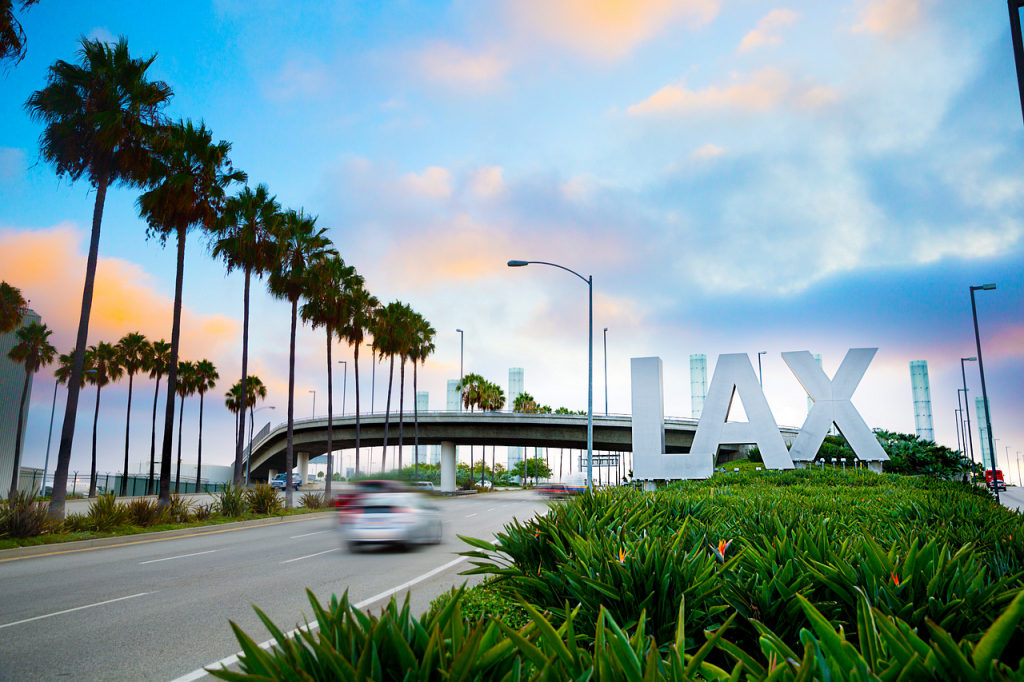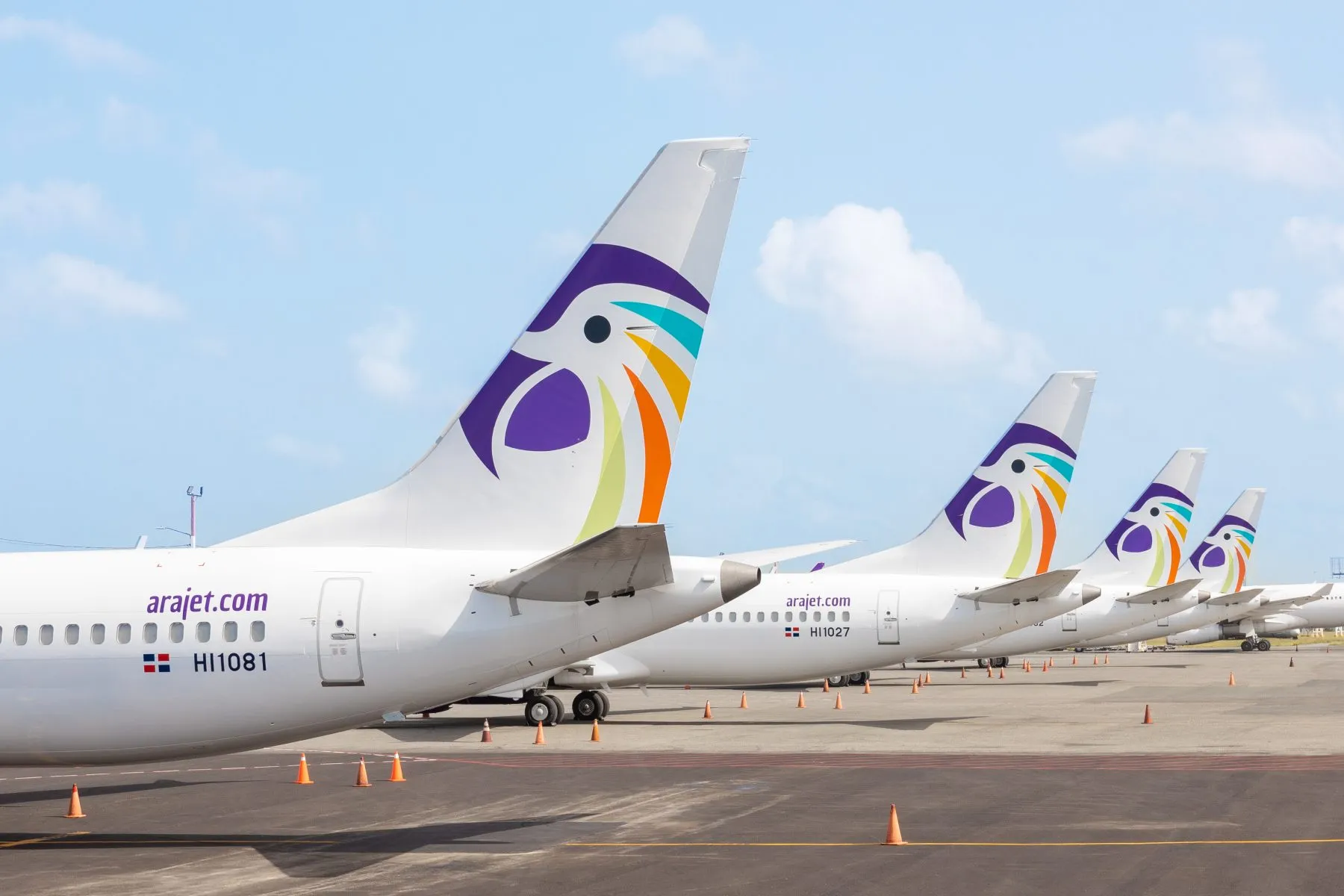Los Angeles Tourism CEO Sees International Arrivals as Key to Full Recovery

Skift Take
When California reopened in mid-June, Los Angeles’ optimism was running high for its tourism industry rebound. Weekend occupancy was consistently on the rise, while the city’s vaccination rate ranked among the highest in the state.
But California’s rural destinations such as Yosemite were rebounding faster than its cities, so the reopening of the U.S. to all vaccinated international visitors in November is anticipated to be a game changer that will bring the real “comeback story” that Los Angeles had been hopeful for.
International tourists are vital to Los Angeles’ economy — out of the 50 million people that visited the City of Angels in 2019, which was a consecutive eighth year of record growth, over seven million were from overseas and accounted for 56 percent of all tourism spending.
Skift spoke with Adam Burke, CEO of Los Angeles Tourism & Convention Board, about the early signs of international pent up demand shaping up for the city, tourism job recovery, vaccine mandates, and the challenges facing Los Angeles' destination management organization. Below is an edited version of the interview.
Skift: How has Los Angeles tourism performed over the past four months, and have jobs bounced back?
Adam Burke: We are continuing to see a very steady recovery. July was actually the first month since the onset of the pandemic, that LA County hotels exceeded 70 percent occupancy for the whole month. That was really a watershed moment for us to break 70 percent. And we're actually now seeing a lot of hotels in the 80 and 90 percent range on weekends.
While we still have a ways to go — you may recall that over 544,000 Angelenos were employed in tourism-related careers pre-pandemic — employment in our industry grew from 347,300 jobs in August 2020 to 456,100 in August 2021. In other words, we regained 108,800 jobs or a 31.3 percent year-over-year increase.
I think that's the reason honestly, why I'm most thrilled about seeing the increases in occupancy is that's what's getting the hotels and restaurants and cultural attractions, the impetus to bring people back to work. We actually had a conference not too long ago, from U.S. Travel Association, and having that event in LA actually enabled a lot of hotels to bring staff back.
I think the biggest issue now is, we want to make sure that we can get our team members back safely and responsibly, health and safety has still got to be the highest priority. And that's not just for visitors, it's for our team members and for our residents as well. So the hope would certainly be that within the next 24 months, we can get jobs and careers back to where they were pre pandemic.
Skift: The international market will start coming back in November, a critical segment for Los Angeles. Can you share any new projections and insights?
Burke: It's one of the things that gets me most excited. The international business has been missing for so long and particularly for a city like Los Angeles. One of the things I love about LA is it's one of the most diverse and inclusive cities on the planet. You know, the numbers are staggering. We have Angelenos come from 140 different countries and speak over 220 different languages. So I think that's one of the reasons why it's always been such a leading international destination. So it's been difficult, but we were so thrilled to hear the announcement about November 8. And, you know, honestly, it's impossible to overstate the importance of that to us.
If you look back in 2019. We have 31 million overnight visitors in Los Angeles. Of those 31 million overnight visitors, one in four are international, but they represented half of all overnight's spending. So it's such a disproportionate impact as obviously, they have a longer length of stay and as a result, they also spend more while they're here.
So the November 8 reopening is really wonderful news for everyone in the LA travel and tourism community, we're actually now anticipating that our visitation forecast for the full calendar year will be about a million visitors higher than it was before the announcement. We're now looking at being right around 39 million visitors for the year. That was about 51 million in 2019. So still, you know, well south of where we were in 2019 — we're expecting to hit about 82 percent of 2019 demand this year, and by next year that should grow to about 92 percent. But we'll pick up about another million visitors (in part) because of the reopening of international.
The big difference was that 82 percent of 2019 demand is a very different mix of business than it's been historically. That's why the reopening of international was so critical, because certainly recovery started closer to home with local and drive market. We've seen really strong demand coming back from the both the short and long haul domestic. But even when we were forecasting 82 percent of 2019 demand that was without the international visitor and that was still going to have a significant impact on the economics of it. So that's why having the international guests back, it's going to be so critical for the recovery process.
Skift: What kind of demand are you seeing so far?
Burke: I was on a call with our regional offices today, and they shared the following stats regarding international demand recovery: Canada is rebounding quickly, with August seeing a 66 percent increase in international short-haul flights since February. With the relaunch of direct service on Qantas from Australia to LAX, the carrier fully sold out their inventory for December. In fact, they’ve subsequently added an additional weekly flight effective November 1st to keep pace with the demand.

LA is still the only destination that has its own international offices and full time team members in our key feeder markets. That's the decision I can take absolutely no credit for and predates my time with the organization. So we have seven international offices; four offices in China, one in the UK, one in Sydney, and one in Mumbai. And actually we were the first US destination to have a full time office in India, and the reasons for that I think are fairly obvious. When we look at the just remarkable growth that's going to happen in the next decade, India is certainly going to be one of the most dominant forces in international travel and tourism. But one of the things we did even while our borders remain closed is you know, honestly, we were playing the long game, we knew that the international was going to come back. So we held on to every one of our licenses and I'm really pleased to say we never closed any of our international offices; we did sadly have to reduce staffing levels. But as a result, our in market teams have been actively engaged with the travel trade and with the air carriers all the way through the pandemic. So I think that's one of the reasons why we've seen international already starting to bounce back so quickly.
Mexico and Canada certainly are going to come back very very quickly especially with the announcement that our land borders will reopen on November 8 as well.
But we're expecting you know, the UK will certainly be one of the first true long haul markets back in fact, I leave on this weekend for a trip with brand USA. We're gonna be doing a mission to the UK with a couple dozen of the top US destinations to really talk to the travel trading media in the UK about the the fact that the US is now open for business again, and really, you know, help people understand what they can expect when they come here.
But I think you'll see, you know, on the heels of the UK, particularly with the announcement for November, Australia is going to bounce back very quickly. There's a lot of pent up demand there. And then the EU countries, you know, you look at France, Germany, Ireland, Italy. Beyond that, I mean, certainly a lot of the Asian markets, we expect that we're gonna see South Korea and Japan are going to come back, I think very strong, and not just to Los Angeles, you know, for all the major international destinations across the country. But there's no question that it will take us probably until 2024-25, to see the full array. But in terms of, really the EU, UK and some of the major Asian markets, we think those going to come back very quickly.
Skift: The Los Angeles City Council recently passed and ordinance requiring vaccination proof to enter businesses, like New York and San Francisco. How has that been received by visitors and how are you monitoring consumer sentiment on vaccine mandates?
Burke: We look very closely at consumer sentiment, and that's really been kind of guideposts throughout this to figure out when were people comfortable. I will say even though Los Angeles County was slower to reopen in a number of destinations, that was very much by design. And as a result, we're seeing that it's actually giving people a high degree of confidence that California in general, and LA are very safe places to visit. What we're seeing from the consumer sentiment data is, people really do want to feel confident that when they go to a destination, that they're taking health and safety seriously.
LA County Health did something really, really smart at the outset of this, as early as last summer, they reached out to industry and they said, you know, as health and medical professionals, we know how to mitigate a pandemic. What we don't know is how to operationalize it in your businesses. So they put together the LA County Economic Resiliency Task Force. And that's over a dozen different industries where basically County Health said, you understand your business, you really put together safety protocols that you believe you can implement, and then pass them by us and we'll tell you if they hold up to the science. I think the reason that's been so important is public health policy has been really guided in partnership by industry expertise. The reason I think that matters is visitor experience.
I've traveled I think 10 out of the last 12 weeks, and you know there's some places you go where there are things that are definitely safe, but it's not necessarily seamless or almost positive experience. I'm very pleased to see the way that California and LA have led with health and safety in fact, California now has the lowest case positivity rate in the nation.
Skift: The job of tourism boards is to push out the positive messaging, but there are lots of real challenges. What are the biggest ones you're facing at the moment in your recovery as a city destination management organization?
Burke: The first one has now thankfully been solved — it was really the return to the international marketplace; it's one of the things that makes our community what it is, this incredible infusion of different cultures coming together, it's such a huge driver.
The second thing to me is, I think a lot has been said about labor shortage. If you look nationally, it is evident that it's challenging to find enough qualified talent and I think that's one of the things that we really are focused on — and it's not just for now it's also for the long term — is making sure people are aware that travel and tourism is still a really viable, wonderful career path. I think some people may have a misperception about the nature of the industry. And I think we as an industry need to do a better job of really letting people know that actually travel and tourism is something where you can start on the ground floor and work your way all the way up. I started off as a banquet server.
The way I view it is, when people leave LA, we want them to leave the destination with a high likelihood to return and a high likelihood to recommend the destination. And that all goes to the service experience. So I think that's the thing is as quickly as possible, really get back to the elevated service that people are used to in Los Angeles.
Skift: You mentioned earlier that you are a non-profit organization and your budget is limited. California just approved a $95 million stimulus for its tourism sector — will you be getting any portion of that?
Burke: So first of all, I can't say enough good things about Caroline Beteta and the Visit California team, they are tremendous partners. One of the things I think they do incredibly well is they really spend time talking to and listening to destinations up and down the state. So the way they are using that $95 million is going to benefit every destination. While we're not getting a specific allocation of it, they are focused on how to stimulate recovery in the sectors where it's needed most.
So Visit California is focusing on four key areas. The first one is urban destinations — they saw that a lot of rural destinations did really well early on in the pandemic. The second one is international recovery. The third thing, Visit California is actually doing a group campaign for the first time ever, and so they've partnered with sales leaders across the state and they're going to be doing California activations at major industry trade shows like IMEX over the balance of the year and well into 2022, and really focusing on the message at California is open for professional meetings and events. And then they also are focused on Indigenous Peoples and communities of color and trying to continue to focus on elevating the diversity state wide that makes California such an attractive destination.
Skift: What's the biggest lesson from your experience so far in running a major urban destination in a crisis?
Burke: There are a couple of things. It's created a wonderful spirit of collaboration across the industry as a whole and certainly within the California travel and tourism community that I sincerely hope is a lasting change. We always describe ourselves as collegial competitors, but I think we've realized over the course of the last year that we are far stronger together and so that spirit of collaboration with our sister DMOs, not just in California but across the country, I think we all do better when we all succeed.
The second thing is, if you have asked us 18 months ago, do we feel like we are properly engaged with the right federal agencies we would have sent absolutely — U.S. Travel, that team does a phenomenal job. What we learned was that when we needed to start working with groups like the EDA and the SBA, and this is certainly no fault of theirs but they've never really spent time engaging with travel and tourism, so even though it's a $2.5 trillion industry and one of the U.S.'s largest service exports, they really didn't understand our business model. That's the thing we've learned is that we need to broaden our constituencies, and really spend time with SBA, EDA to make sure they understand just how critical tourism is as a driver of our national economy. Those are two big ones for me.




